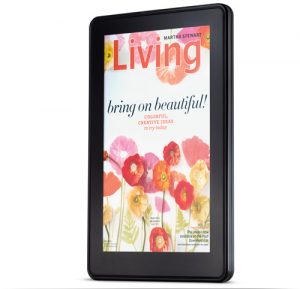
Online retailer Amazon on Wednesday officially launched its first Android tablet, the 7" Kindle Fire.
Taking its name from the company's already successful line of e-readers, the Kindle Fire introduces a handful of new features to the Android tablet business.
First, it will enter the market at the low end of the pricing scale. At $199, it will cost the same as Lenovo's Ideapad A1 tablet, putting it far below other brand name tablets in price.

Second, Amazon's major differentiator is that it has built its own UI on top of Android that completely focuses on a user's existent Amazon account and all of Amazon's services: its MP3 shop, its Android App Store, the Kindle reader app and bookstore, Amazon Video on Demand and Amazon Prime. Amazon CEO Jeff Bezos today said the Kindle ships pre-registered with your Amazon account and will work immediately out of the box. When comparing this to the setup currently related to Apple's iPad or even other Android tablets, it's a major winning factor.
Third, and probably the most surprising revelation from Amazon today was Amazon Silk, a cloud-supported browser which resides locally on the Kindle Fire, but utilizes Amazon's EC2 for handling heavy computation. The user can split computational tasks between the onboard dual-core processor and Amazon's EC2 cloud.
Amazon describes Silk in the following way:
A typical web request begins with resolving the domain names associated with the server and establishing a TCP connection to issue the http request. Establishing TCP connections for each request consumes time and resources that slow down traditional browsers. Silk keeps a persistent connection open to EC2 so that there is always a connection at the ready to start loading the next page. Silk also uses EC2 to maintain a persistent connection to the top sites on the web. This approach reduces latency that would otherwise result from constantly establishing TCP connections. Further, Silk's split architecture uses a pipelined, multiplexing protocol that can send all the content over a single connection.
This is a big deal, and one that we're going to dive into much more deeply today.

